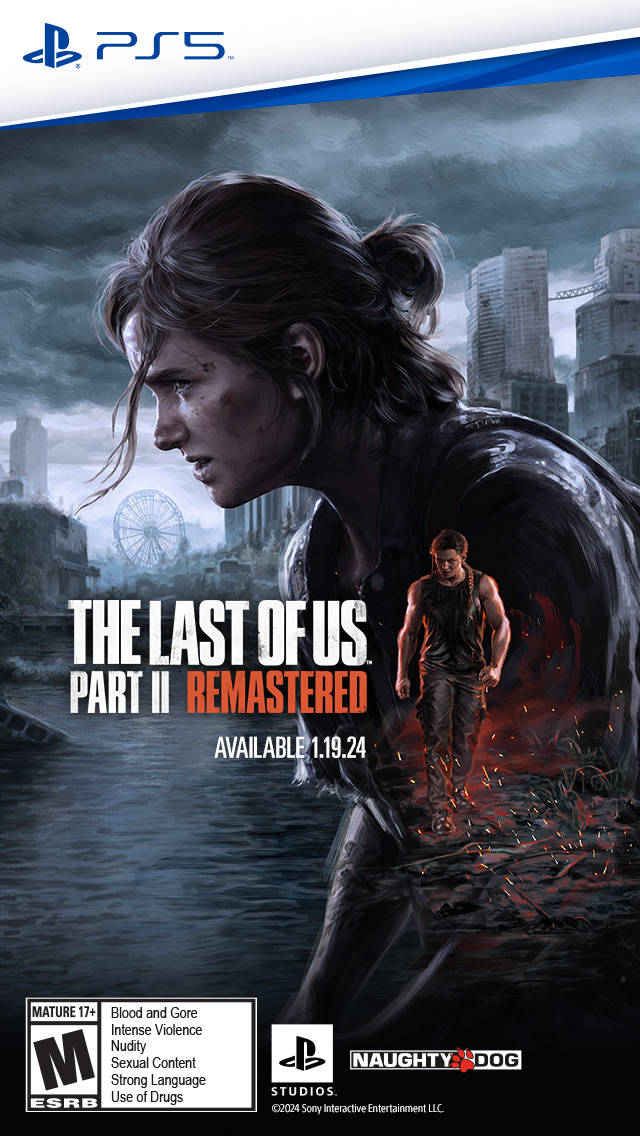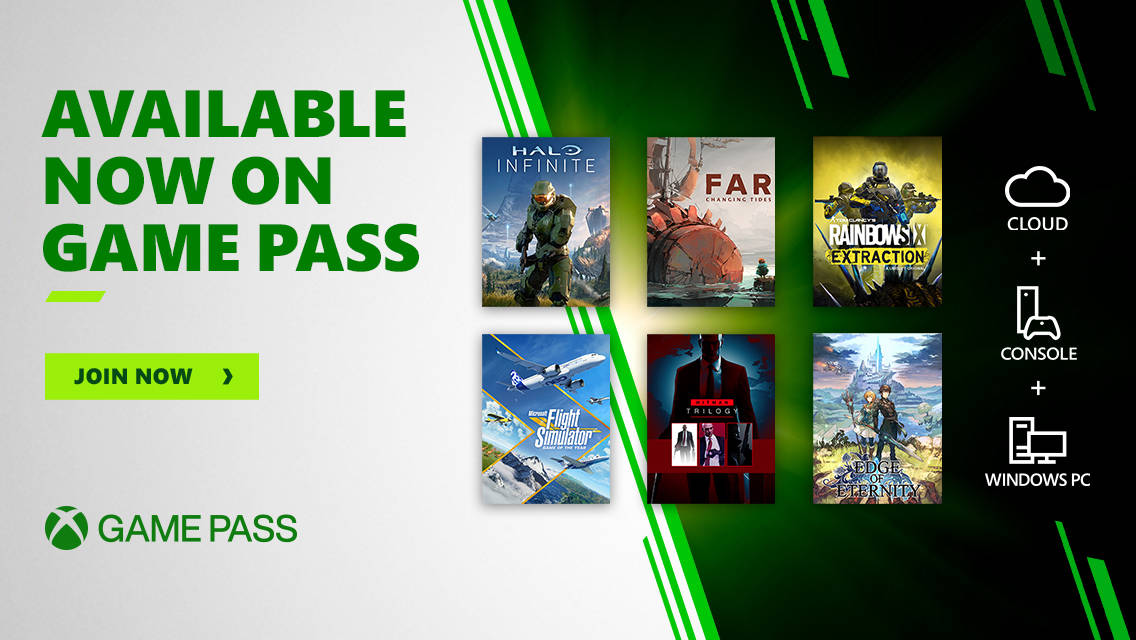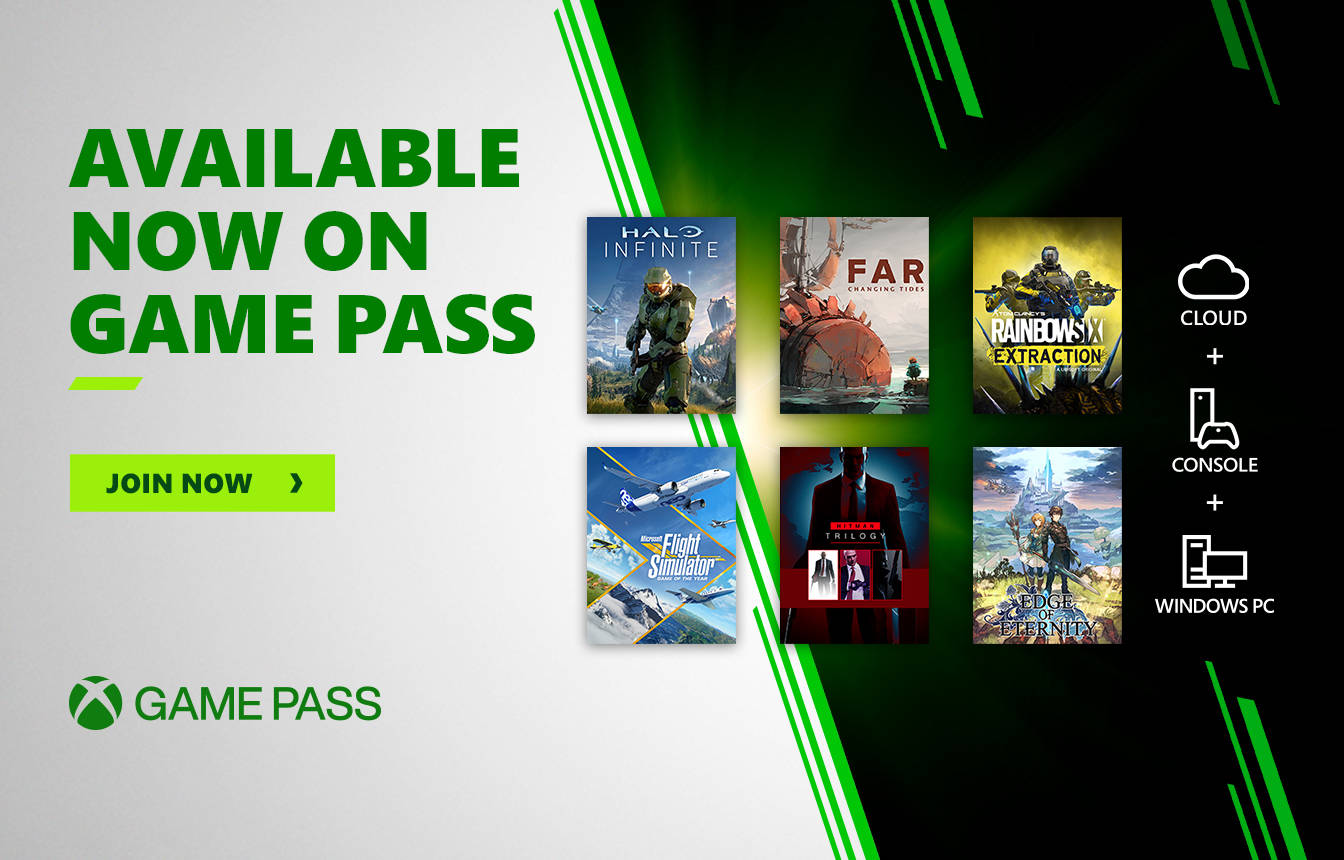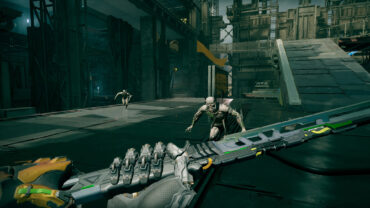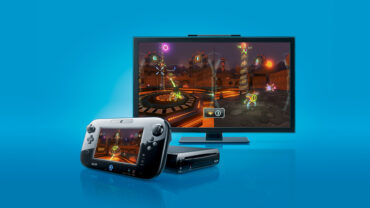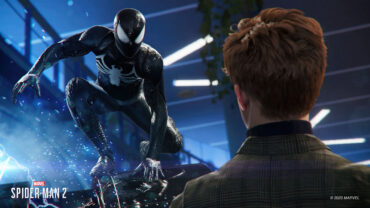Far Cry 6 is a playable identity crisis.
Sure, the latest entry in Ubisoft’s series of open-world shooters retains many of its core gameplay competencies, but the design and storytelling surrounding that core feel more strained and less surefooted than ever. In some respects, the game feels like the culmination of the franchise’s recent history, as it’s grown less and less certain of what it could or should be. Is it an open-world sandbox shooter, or an RPG where you need to constantly manage your loot, crafting, and resources? Is it a zany, over-the-top playground, or a serious take on its chosen subject matter? Is it a game you play to the end, or one you play forever?
Ubisoft’s answer to all these questions is yes—all of that, all at once. It can’t be, but it is, so here we are.
Set on the island nation of Yara—really just a lightly fictionalized version of Cuba—Far Cry 6 places you in the role of Dani Rojas, a woman (or man, if you choose) trying to flee the island’s dictatorial regime for a new life in America. One ill-fated boat ride later, Dani winds up fighting for a guerrilla organization called Libertad, working to bring down the government and free Yara.
This is, on the surface, a fairly serious story. In the intro, Dani witnesses the slaughter of her close friend and a number of civilians during a crackdown on dissenters. She encounters the island’s dictator, Antón Castillo, face-to-face and nearly dies when his forces wipe out an entire boat of would-be refugees, leaving her as the sole survivor.
Nearly as soon as Dani meets up with Libertad, however, the trademark Far Cry goofiness starts to creep in. She meets Juan Cortez, a profane, hard-drinking guerrilla who fashions silly weapons. The two soon connect over their shared understanding that, actually, killing people during a revolution is kind of fun—clearly an attempt to bridge the gap between the absurdity of gameplay and of many of the characters you encounter and the more serious tone and subject matter of the main story. But it’s the equivalent of putting scotch tape on the gash in the Titanic. The gap in tone is all but unbridgeable, and drawing attention to it just makes it worse.
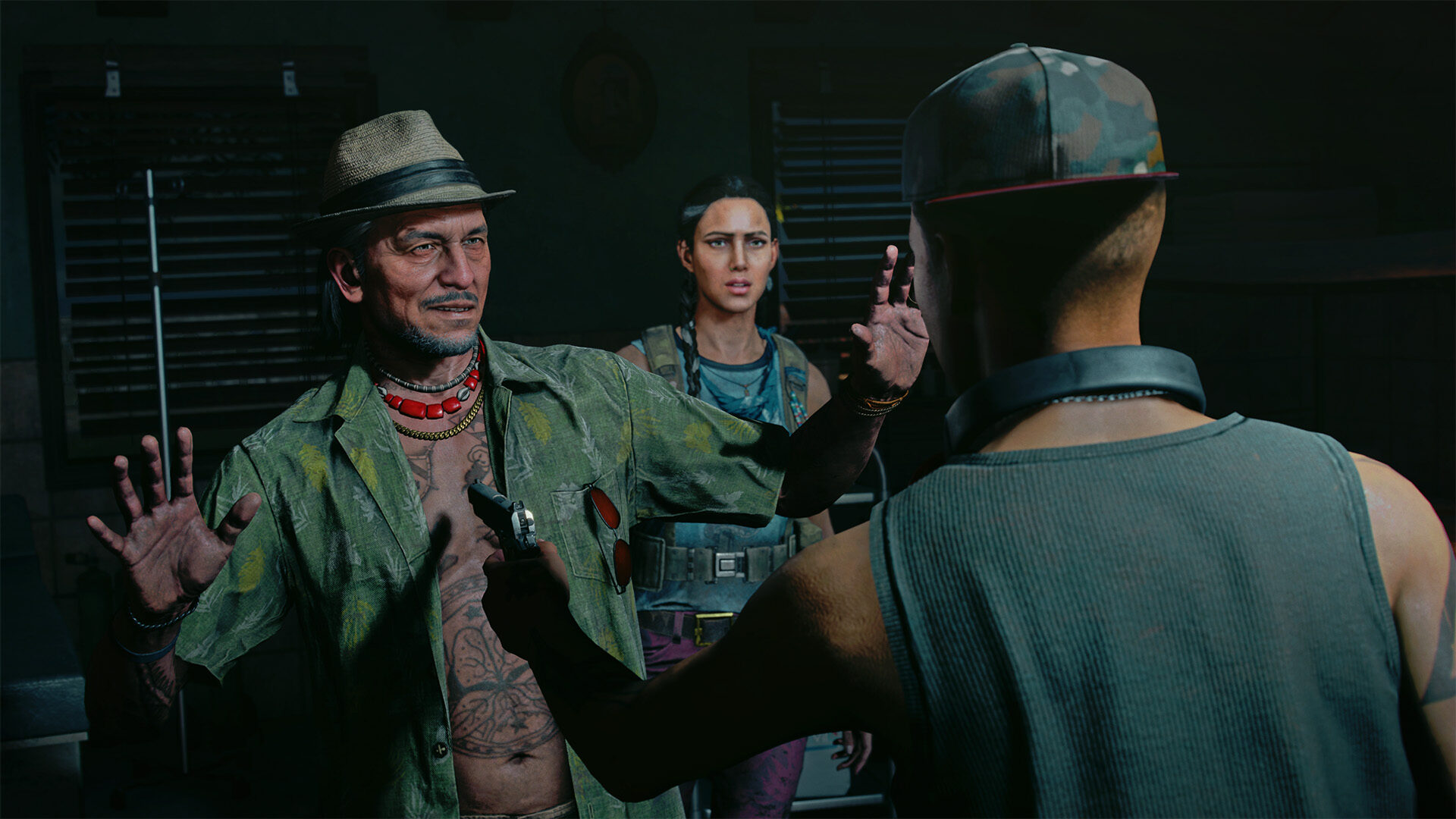
It’s certainly true that previous Far Cry games juxtaposed uncomfortable topics and graphic violence with ridiculous antics, but the mismatch between what you do and what you’re up against feels much more incongruous this time around. Whereas Far Cry 3’s Vaas was larger-than-life and unhinged, and Far Cry 4’s Pagan Min had the panache and short fuse of a comic-book baddie, Far Cry 6’s Antón Castillo is a comparatively grounded villain. He’s not a kook. He’s an unsettlingly composed fascist. If he’s operating in a heightened reality, it’s only in the extent to which he’s violent. He doesn’t feel like he could possibly exist in the same world as a rebel who sings along to “Livin’ La Vida Loca” as she squashes a soldier with her flying car before hopping out to shoot at a tank with a gun that fires “Macarena” CDs. Call me crazy, but I suspect there’s a good reason Inspector Gadget never fought Hitler.
Even ignoring the issues of tone, Antón mostly feels like a missed opportunity. Actor Giancarlo Esposito brings the character to life quite brilliantly, but he’s not a brilliant character. He doesn’t have enough screen time to convey the real depth you’d want from a great villain, and much of the time he does have is wasted.
A good 75 percent of Antón’s presence in the game (discounting the speeches over PA systems and on TVs) comes via short vignettes that cut away from the main narrative, usually showing him interacting with his son and future heir, Diego. But rather than use each one to show a different side of him, these scenes just hit on the same beats over and over again. The writers clearly tried to recapture the spark of Esposito’s turn as Gus Fring on Breaking Bad, but in doing so they broke it down to a formula that kills all the magic: Antón gives a speech about his values, then—surprise—does something super violent. Probably half of his scenes in the game, and the vast majority of the early ones, are just variations on that same pattern. Later on, Esposito gets some better material to work with, but it feels like too little, too late.
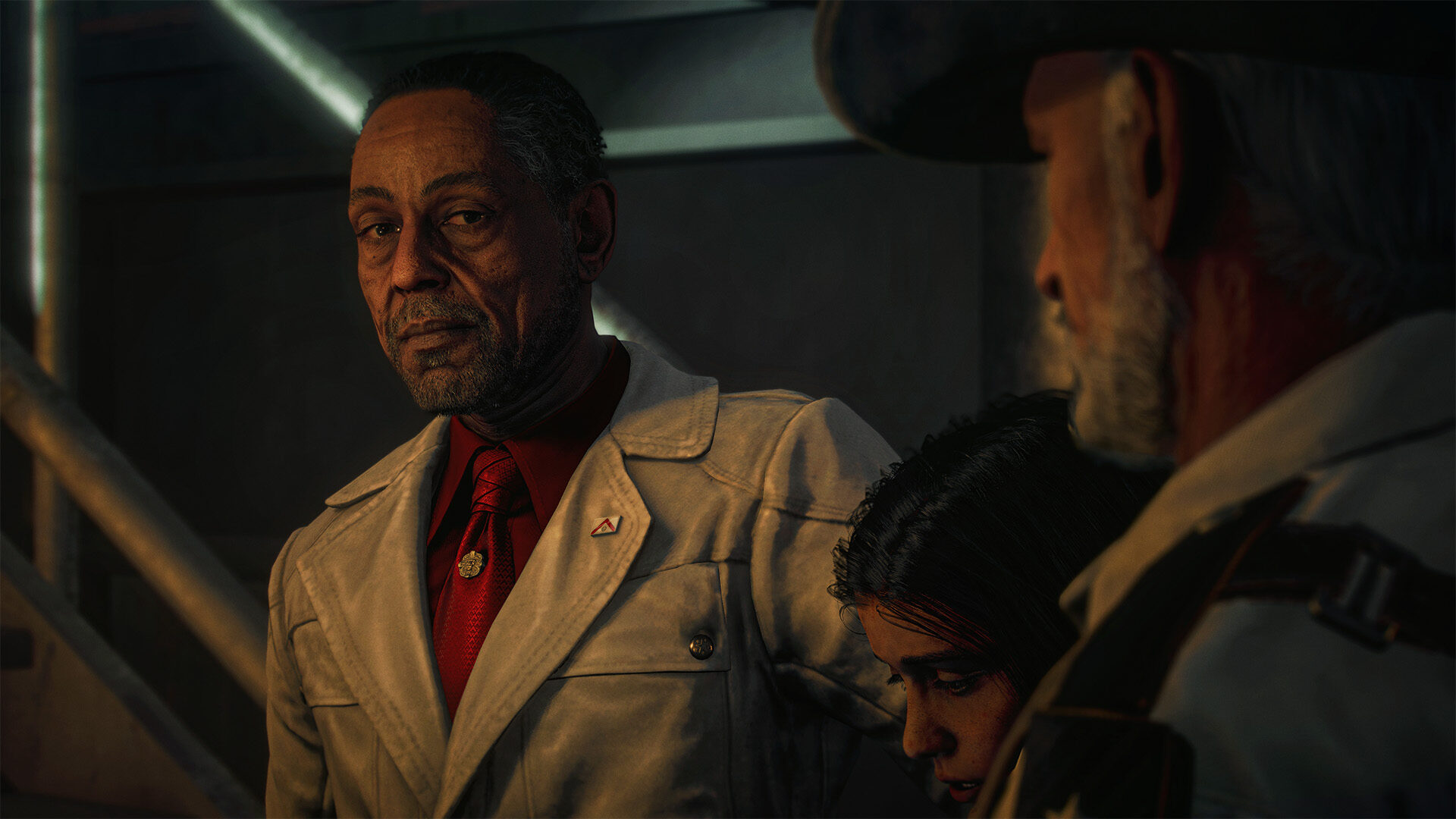
In fact, nearly every aspect of Far Cry 6’s story and world feels like a pale imitation of what it might have been. I’m certainly no expert on Latin American culture, let alone the specific Caribbean version that Ubisoft mined to create Yara. But in an effort to improve my Spanish, I do frequent a few Latin American online communities, and I’ve got some small sense of what an authentic, insightful portrayal might include, like the distinctive attitudes towards family, the teasing rivalries between different countries and regions, and the complex, cynical, and often self-deprecating identities that come from living in “un país tercermundista.” I didn’t spot anything close to any of that in Far Cry 6.
Most of the time, the game just settles for a hodgepodge of easy stereotypes: rum, cigars, dancing, cockfighting, dominoes, old cars, quinceañeras, Santería-style mysticism. I found myself craving depth from the world and not finding any. I don’t necessarily know if the shallow portrayal crosses the line into offensive, but I wouldn’t be surprised if people better equipped than I am to make that call do take offense.
At the very least, I don’t believe the characters are just stereotypes. Most of them feel like distinct individuals—just not particularly well-rounded or compelling ones. Ultimately, the only character in the game I truly enjoy is a chicken. Take from that what you will.
In its defense, Far Cry 6 does do a bit of work to explore the major tensions within contemporary Latin American culture, like issues of sexism, colorism, homophobia, and transphobia. But this is usually a matter of briefly acknowledging these things exist, or existed at some unspecified time in the past, and then moving on so you can shoot more stuff. They’re almost always problems characters talk about having encountered, not problems we see them encounter. In a game about young, college-educated revolutionaries and old-guard guerrillas coming together to build a better country, there’s no real generational tension or interpersonal conflict. No “good guy” ever expresses a retrograde view.
In fact, none of the revolutionaries really talk about politics at all—which is pretty shocking considering Dani is essentially trying to unite Communists, anarchists, and agrarians under the banner of Libertad, which is ideologically hard to pin down but vaguely trying to build a liberal democracy.
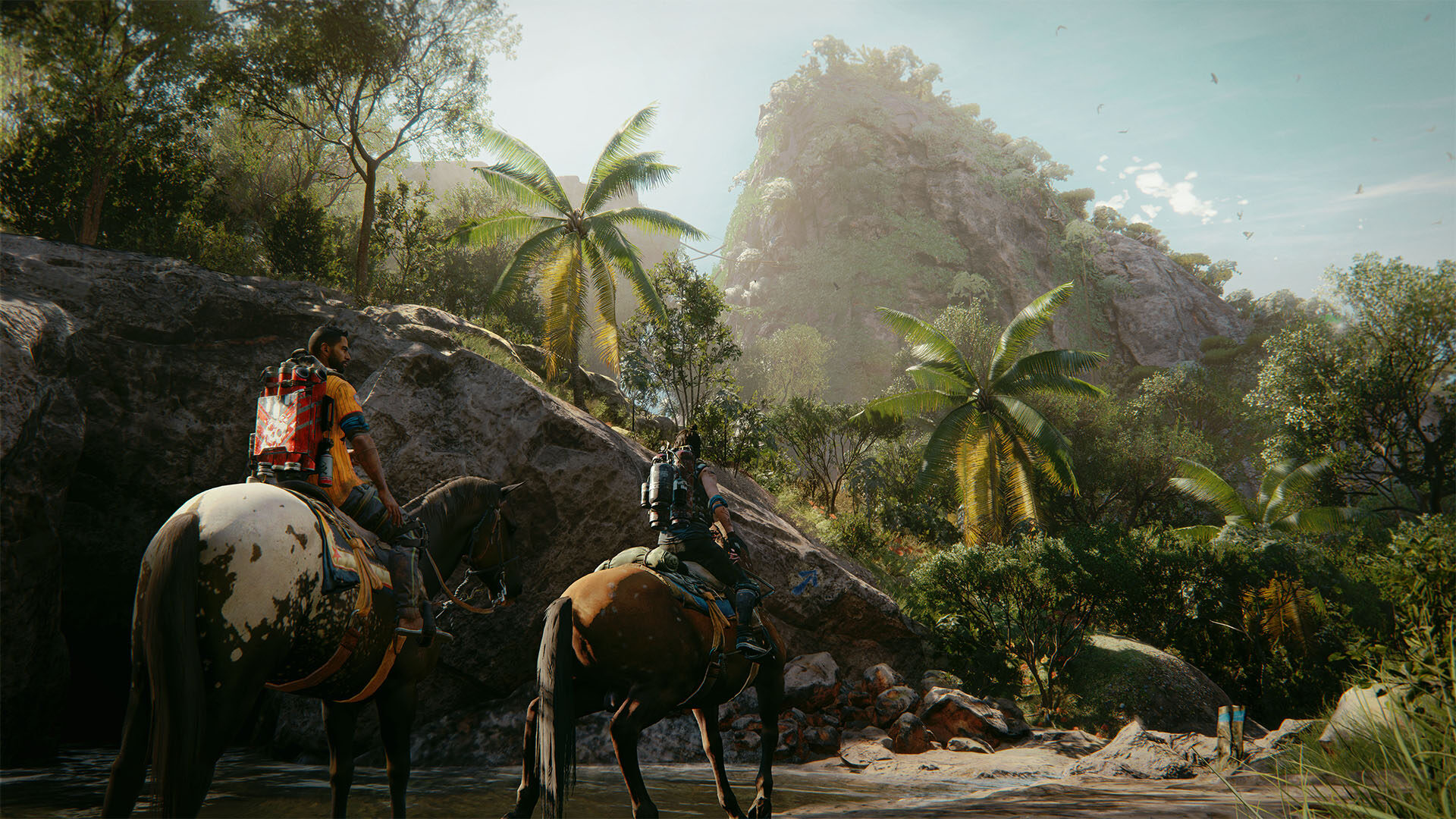
A few years back, when Ubisoft, after much public flogging, clarified that its games can be political but not didactic, since-ousted Ubisoft exec Tommy Francois said the goal was to showcase multiple perspectives and let players decide. “If my game was set during the Vietnam conflict, for example, we would want the Viet Minh, the Viet Cong … basically everyone’s point of view,” Francois said at the time. Well, Far Cry 6 is about as close as Ubisoft has gotten to making a game about the Vietnam War, and you won’t find much of anyone’s point of view shining through.
Sure, Antón gets to make one insightful, interesting speech critiquing the role of slavery in America’s founding, but I’m not sure that counts as ideology when he’s doing it to justify his own use of slave labor. “The guy instituting a caste system, executing thousands of his own people, and poisoning the land and waterways makes some good points,” isn’t really the best way to present players with a diversity of views.
But hey, maybe you’re not here for a compelling story or great characters or tonal consistency, and you’ll be happy if that Far Cry gameplay you know and love holds up its end of the deal. No shame in that, but the news isn’t all that great there, either.
From a pure gameplay standpoint, Far Cry 6 still features the same solid core the series has honed throughout its previous iterations. Gunplay, stealth, and the freedom to pivot between the two on the fly still work as well as always. Pulling off a bunch of quick headshots with a bow to capture an outpost undetected is still a thrilling little 10-minute chunk of gameplay. The sandbox side of things still leads to memorable and hilarious moments, as the physics, vehicles, and AI all smash against each other in unexpected ways. New ingredients like a car that can transition on the fly into a paraglider, imaginative “resolver” weapons like a firework cannon, and the new Supremo backpacks (essentially different ultimate abilities that slowly recharge over time) meaningfully extend the fun, too.
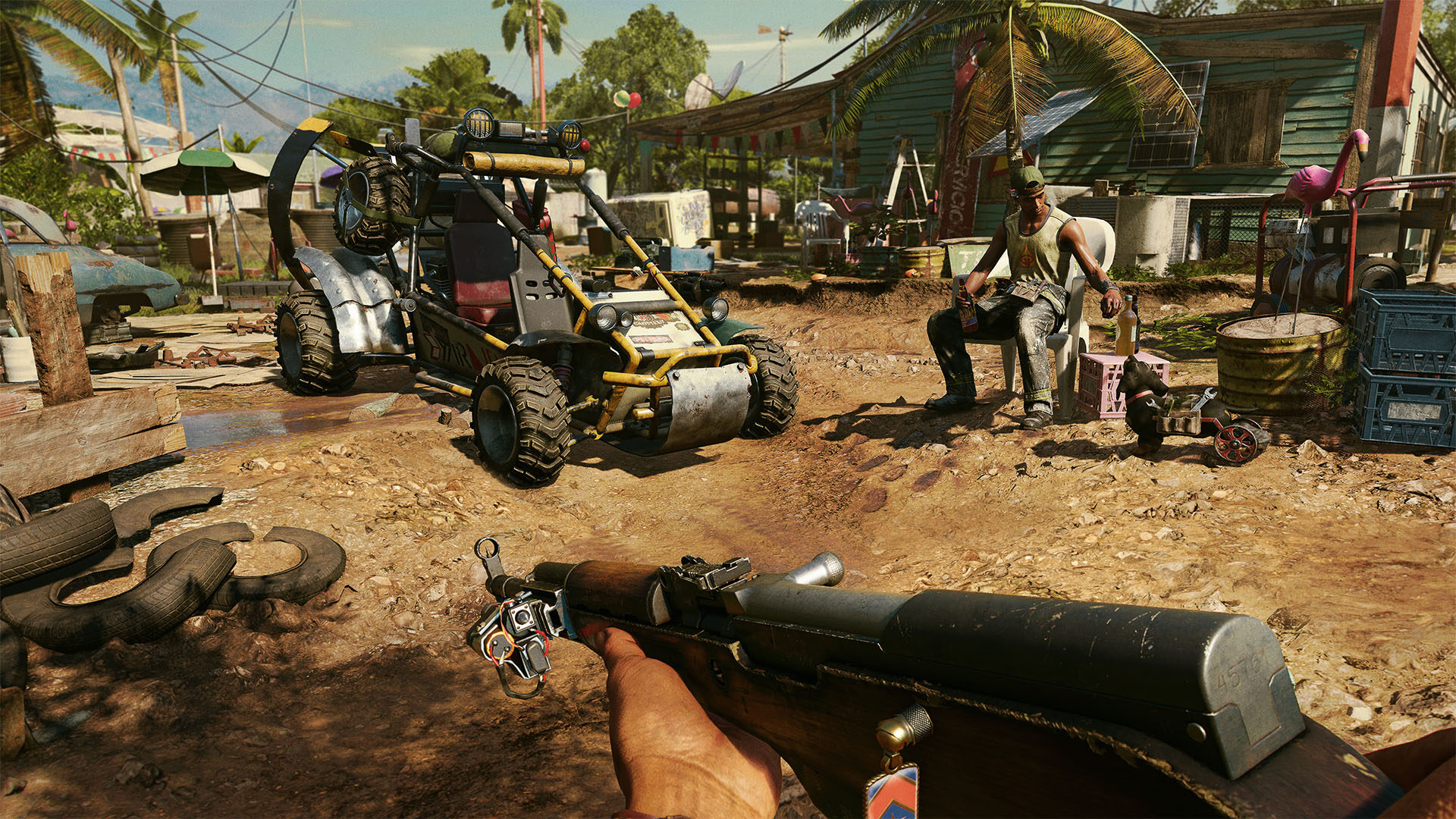
But everything around that central gameplay—the systems, the economies, the mission and narrative design—feels more like a disorganized, indecisive hodgepodge than ever before. It’s like Ubisoft keeps trying to assemble the same puzzle to make a different picture. You can sort of see what they were aiming for, but there are a lot of jagged edges and pieces that clearly don’t fit together the way they should.
These aren’t new problems, per se. For me, the disconnect first surfaced in Far Cry 5 and became even more blatant in the post-apocalyptic spin-off New Dawn. But Far Cry 6 feels like the culmination of that aimlessness. It’s bigger, more ambitious, and ultimately more awkward than either of those games. Its new toys are almost universally great. Its new ideas are almost universally misguided.
Ubisoft has attempted to weave together concepts from just about every previous game, along with some new ones, in an attempt to freshen up the series, but the result is hardly cohesive. The resource and crafting system suffer from many of the same problems they did in New Dawn. If you’re a completionist doing everything that pops up on your map, you’re going to have way more of everything than you could ever use. If you’re not, it’s probably going to feel inconvenient to have to scrounge around a ton, holding down a button to pick up gasoline or medicine a thousand times an hour.
Some returning elements now feel almost vestigial. There’s no substantial incentive to fish or hunt anymore, for instance. New additions, like the menu-based idle missions where you send commanders out, wait a few hours, and the go back to the menu to click some buttons, are so boring and contribute so little that I can’t understand their inclusion at all.
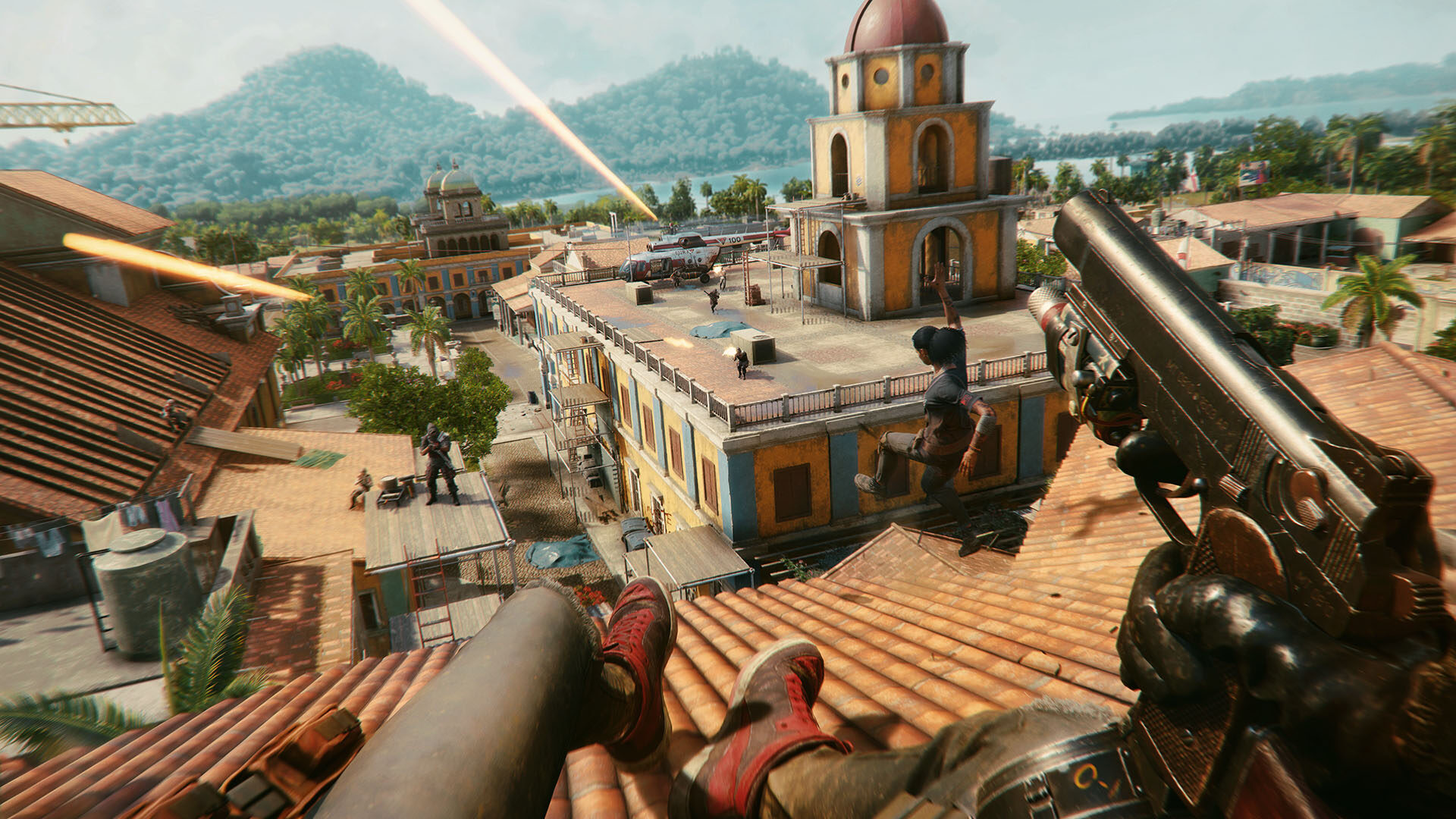
Ubisoft’s oddest design choice, by far, is its decision to strip out the leveling system of previous games and split it into two pieces. You’ll still collect XP and level up, but any stat increases are completely automatic and opaque. You’ll do more damage (I think) and get more health, allowing you to better hold your own against similarly scaling enemies. Of course, since all the regions increase in difficulty as you work through the story, you’re not really building up a meaningful edge, just keeping pace.
The more mystifying half of that change is that Far Cry 6 entirely does away with the perks you’d unlock to build out your character in earlier games. The replacement is a gear system with different slots of clothing that grant you different buffs or abilities. Whereas before you might decide to spend a perk point on a new ability that lets you, say, sabotage alarm systems, now you need to find or buy a special pair of gloves to do that. And if you have those on, you’re losing out on other abilities or buffs from that slot.
The sheer inconvenience of tracking what each item does—you need to open a menu, then go into a sub-menu for that gear slot, then move a cursor over every option to read its description—means experimenting with different builds is an enormous pain. There are almost 150 individual pieces of gear. It’s essentially impossible to keep track of what everything does in your head.
In theory, the game wants you to be constantly swapping between different options based on the type of challenge you’re facing. But I just don’t think the Far Cry formula works if you’re constantly micromanaging your loadout. No one wants to pause the game to put on their anti-explosive gear every time a tank shows up, or to swap out their gloves every time they want to booby-trap an alarm. Maybe having all those perks accessible in one character led to too much power creep, but this is an overcorrection. No single loadout feels particularly powerful for most situations. If you really wanted to use the system to its fullest to optimize your play, you’d be making far more frequent gear swaps than you would in even a dedicated RPG like Skyrim. In practice, I just gave up and used the same set, a parkour outfit that let me run around faster, because it wasn’t worth the trouble. You can get by pretty much ignoring gear if you want to, but that’s not exactly a sign of good design.
The truth is, I could go on and on at length about a dozen more granular complaints. Too much side content feels like transparent busywork. There’s a bizarre, live-service endgame that undermines whatever impact the story might have had. I encountered numerous, significant technical issues of just about every stripe. There’s a hilariously unbalanced gun and Supremo combo that lets you one-shot all enemies through walls for 30 seconds. The much-touted “urban environment” of Esperanza is actually mostly boxed-off corridors that lock you out of nearly everything fun about the rest of the game. But I’m not sure piling on more and more detail would actually strengthen my argument much.
At the end of the day, it’d just be a lot more words to say the same thing: Far Cry 6 is a lesser version of a once-great series, stumbling forward in an attempt to evolve without a clear vision of what it should become.
|
★★☆☆☆
Far Cry 6’s barely hangs together on the strength of the gameplay loop it inherits from its predecessors. Beyond the addition of some fun new toys, like the “resolver” weapons and Supremo backpacks, nearly every design change is mystifyingly for the worse, and the mismatch between the gameplay and storytelling ambitions is more conspicuous than ever. |
Developer Ubisoft Toronto Publisher Ubisoft ESRB M - Mature Release Date 10.07.2021 |
| Far Cry 6 is available on PlayStation 5, Xbox Series X/S, PlayStation 4, Xbox One, PC, Stadia, Luna. Primary version played was for Xbox Series X. Product was provided by Ubisoft for the benefit of this coverage. EGM reviews on a scale of one to five stars. | |

